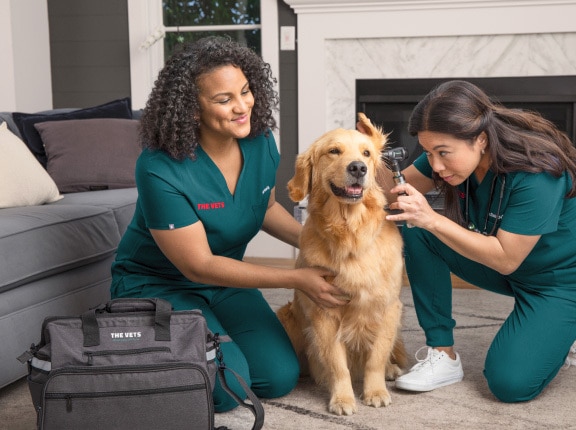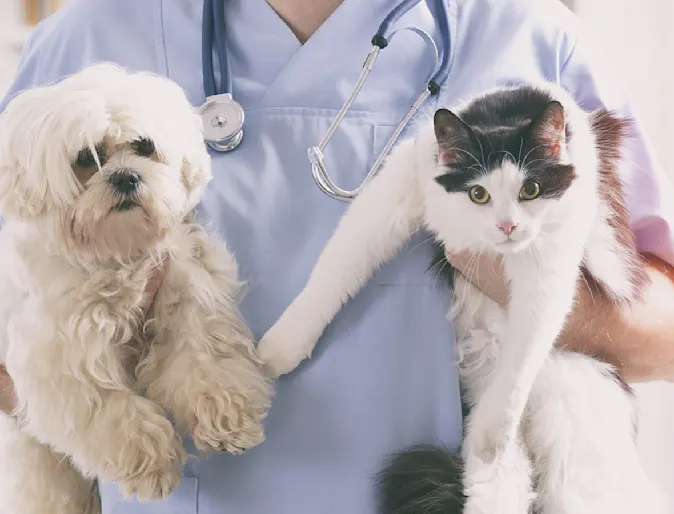FAQs Answered: What Pet Owners Should Know About canine tplo surgery
FAQs Answered: What Pet Owners Should Know About canine tplo surgery
Blog Article
Everything About Veterinarian Surgical Procedure: Comprehending the Significance of Expert Care for Your Animals
Vet surgery is an essential part of pet medical care. It includes various procedures, from regular optional surgeries to urgent treatments. Comprehending the ins and outs of these surgical treatments can help pet proprietors make notified decisions. The preparation, implementation, and recovery stages are crucial for ensuring the well-being of animals. With correct understanding, proprietors can browse the complexities of vet treatment. What aspects should be thought about before a family pet undertakes surgical procedure?
Sorts Of Veterinarian Surgeries
When an animal requires medical treatment, understanding the numerous sorts of veterinarian surgical treatments can assist pet dog proprietors make informed choices. Veterinary surgical treatments can be generally classified right into three primary types: elective, urgent, and emergency surgical procedures. Elective surgical treatments, such as spaying or neutering, are intended procedures that are not promptly lethal. Urgent surgical procedures, like those for foreign body removal, need to be done quickly but are not dangerous in the minute. Emergency situation surgeries, such as those resolving serious injury or inner blood loss, are critical and call for immediate attention.Additionally, surgical procedures can differ in complexity, ranging from minimally intrusive laparoscopic treatments to much more comprehensive open surgical treatments. Each type of surgical treatment lugs its own risks and recovery procedures. Comprehending these groups enables family pet owners to participate in purposeful discussions with vets, resulting in better results for their cherished animals.
Preparing for Your Pet's Surgery
Preparing for a pet dog's surgical procedure includes an extensive checklist to guarantee all essentials are covered. Reliable communication with the veterinarian is vital for recognizing the treatment and any kind of necessary pre-operative steps - tplo surgery for dogs. In addition, having clear post-operative care instructions will help proprietors give the finest assistance for their recuperating animals
Pre-Surgery Checklist Basics
Guaranteeing a smooth medical experience for a pet needs careful prep work and attention to information. A pre-surgery checklist is vital for animal proprietors to comply with. Confirming the arranged surgical treatment date and time is crucial. Proprietors must likewise verify that their pet dog has not eaten according to the vet's instructions, typically for 8-12 hours prior to surgery. Gathering needed clinical documents, consisting of inoculation history, is necessary for the veterinarian's review. It is likewise a good idea to prepare a comfy space at home for the pet dog's healing after surgical treatment. Ultimately, owners ought to have a prepare for transportation to and from the vet center, making certain that the pet dog is secure and comfortable throughout the journey. Adhering to these actions can substantially improve the medical experience.
Connecting With Your Veterinarian

Reliable interaction with the veterinarian is essential for an effective surgical experience for pet dogs. Proprietors ought to be prepared to discuss their pet's case history, consisting of any type of pre-existing problems, medicines, and allergic reactions. This information aids the vet analyze threats and tailor the medical plan accordingly. Additionally, pet dog owners must ask concerns regarding the procedure, anesthetic, and anticipated outcomes to guarantee they fully comprehend the procedure. Making clear any questions can relieve anxiousness for both the pet dog and the owner. It is additionally crucial to communicate any type of behavioral adjustments or worries observed in the animal leading up to the surgical procedure. Eventually, clear discussion promotes trust fund and collaboration, guaranteeing that animals get the most effective feasible care during their surgical journey.
Post-Operative Treatment Recommendations
After going over the operation with the vet, family pet owners should concentrate on post-operative care directions to assist in a smooth healing for their pets. These instructions commonly include monitoring the medical website for signs of infection, such as inflammation or discharge. Family pets may require to be kept one's cool and confined to stop too much movement that can disrupt recovery. Discomfort administration is vital, so proprietors must follow the veterinarian's assistance on administering medications. In addition, dietary constraints may be recommended to prevent intestinal distress. Routine follow-up visits are necessary to guarantee correct healing and resolve any kind of issues. By sticking to these post-operative care guidelines, animal owners can significantly add to their pet's recuperation and total wellness.
The Surgery Explained
The medical process for family pets incorporates critical actions that assure their safety and recovery. Pre-surgery preparations are essential for decreasing threats, while post-operative treatment guidelines play a vital function in advertising recovery. Understanding these parts helps pet dog owners browse the surgical experience better.
Pre-Surgery Preparations
Before a pet dog undergoes surgical treatment, a number of essential prep work have to happen to ensure a risk-free and successful procedure. Initially, a thorough vet exam is important to examine the animal's general health and wellness and determine any possible risks. This may consist of blood tests, imaging, or other diagnostics. The vet will additionally discuss anesthesia alternatives tailored to the pet's certain needs. Furthermore, animal owners are normally advised to hold back food and water for a defined time prior to surgical treatment to reduce the threat of complications throughout anesthesia. It is necessary for proprietors to give a total clinical background, consisting of any type of medicines or allergic reactions, ensuring the medical team has all needed information. Proper communication and adherence to pre-surgery guidelines can greatly improve the result of the procedure.
Post-Operative Treatment Guidelines
Correct post-operative care is necessary for making sure a family pet's recovery adhering to surgical treatment. After the procedure, pet dogs ought to be kept track of very closely for any type of indicators of issues, such as excessive bleeding, go now swelling, or uncommon habits. It is essential to follow the veterinarian's directions regarding medicines, including discomfort relievers and anti-biotics. Family pets should be kept in a peaceful, comfortable atmosphere to decrease tension and advertise recovery. Limiting activity is important; short, leashed walks might be essential, but leaping or running need to be prevented. Routine follow-up appointments should be set up to evaluate the healing procedure. Additionally, the surgical website has to be maintained clean and dry, with any type of signs of infection reported to a vet quickly. Abiding by these guidelines enhances recovery end results.
Anesthetic and Discomfort Administration
Efficient anesthetic and pain administration are essential parts of vet surgical procedure, making sure that pets stay comfy and safe throughout the treatment. Veterinarians evaluate each family pet's private requirements, considering elements such as age, weight, health condition, and the type of surgery being performed.Anesthesia methods generally include a combination of pre-anesthetic medicines, induction agents, and inhalant anesthetics, permitting exact control over the animal's degree of awareness. Tracking during surgical procedure is essential; veterinarians continually observe crucial indicators to attend to any type of potential difficulties promptly.Pain administration strategies might include opioids, non-steroidal anti-inflammatory medicines (NSAIDs), and anesthetics, tailored to the pet dog's details circumstance. This diverse approach helps reduce pain and advertises a smoother medical experience. By prioritizing efficient anesthesia and pain administration, vet professionals enhance the general welfare of animals going through operations, guaranteeing they get the highest possible criterion of care.
Post-Operative Treatment and Recovery
Following surgical treatment, the emphasis moves to post-operative care and recuperation, which is vital for making sure an animal's safe go back to normal tasks. During this duration, animals call for a quiet, comfy atmosphere to help healing. Proprietors need to carefully check their animals for any type of indications of pain or uncommon behavior.Veterinary guidelines often consist of certain directions associated with drug management, wound care, and dietary modifications. It is essential to comply with these suggestions to decrease difficulties and advertise healing. Family pets may need to be restricted from energetic tasks, such as running or jumping, throughout their recuperation period (canine tplo surgery).Regular follow-up visits with the veterinarian enable monitoring of the pet dog's progression and timely modifications to the care plan. Supplying psychological assistance and companionship can also improve a family pet's recuperation experience, helping to alleviate stress and anxiety and anxiousness. Overall, diligent post-operative care plays a substantial duty in attaining a successful healing
Identifying Complications After Surgical Treatment
Just how can animal proprietors determine difficulties after surgical treatment? Understanding of certain indicators is vital for ensuring the health of pet dogs during healing. Common signs consist of too much swelling, redness, or discharge at the surgical site, which might signify infection. Additionally, consistent pain, indicated by whining or unwillingness to move, ought to trigger instant attention. Modifications in appetite or water consumption can likewise show problems; a decline in these habits might indicate discomfort go to my site or distress.Moreover, pet dog owners should check their animals for any type of unusual actions, such as sleepiness or problem breathing, as these can be indicators of serious issues. Vomiting or diarrhea adhering to surgical treatment may call for immediate vet assessment. Recognizing these problems early can considerably influence a pet's healing procedure, emphasizing the relevance of alertness and prompt interaction with a veterinarian for any kind of concerning signs.
The Function of Veterinary Professionals in Surgical Care
Veterinary experts play an essential role in guaranteeing the security and success of procedures for family pets, especially following surgical treatment when keeping track of and treatment are critical. These specialists consist of vets, vet specialists, and support personnel, all of whom add specialized skills to the surgical process.Before surgical procedure, vets conduct extensive assessments to examine the pet dog's health and wellness, guaranteeing that any type of hidden problems are managed. Throughout the procedure, the surgical team supplies anesthetic, preserves clean and sterile settings, and monitors key signs, very important for decreasing risks.Post-operative treatment is similarly significant; veterinary professionals observe for issues, manage discomfort, and guide proprietors on recovery techniques. Their knowledge allows them to recognize very early indicators of distress or infection, making certain prompt intervention. Inevitably, the joint initiatives of veterinary professionals in surgical treatment cultivate a safe setting, advertising the health of family pets throughout the surgical trip.

Frequently Asked Concerns
Just how Do I Choose the Right Veterinary Cosmetic Surgeon for My Pet dog?
Choosing the right veterinary specialist includes investigating credentials, additional hints reviewing reviews, and evaluating the center's environment. It is vital to reflect on the cosmetic surgeon's experience with certain treatments and their communication style when deciding.
What Prevail Misconceptions Concerning Vet Surgeries?
Common mistaken beliefs about veterinarian surgeries include beliefs that they are constantly high-risk, unneeded, or for emergencies. Several animal proprietors undervalue the advantages of precautionary treatments and the skill associated with veterinary medical treatment.
How Much Will My Animal's Surgical procedure Expense?
The price of a pet dog's surgery can differ substantially based upon aspects such as the type of procedure, the veterinarian's experience, and geographical place (24 hour vet bellingham). Typically, expenses vary from a few hundred to several thousand dollars

Can My Animal Consume Before Surgery?
Prior to surgical treatment, it is usually encouraged that family pets avoid eating for a specific duration. This fasting helps reduce the threat of complications during anesthetic. Proprietors ought to consult their veterinarian for specific directions tailored to their pet dog's demands.
Suppose My Pet Has Pre-Existing Wellness Issues?
When a pet dog has pre-existing health problems, it's crucial for the vet to evaluate these elements before surgical procedure. This examination guarantees ideal preventative measures are taken, reducing risks and maximizing the family pet's overall security during the treatment.
Report this page